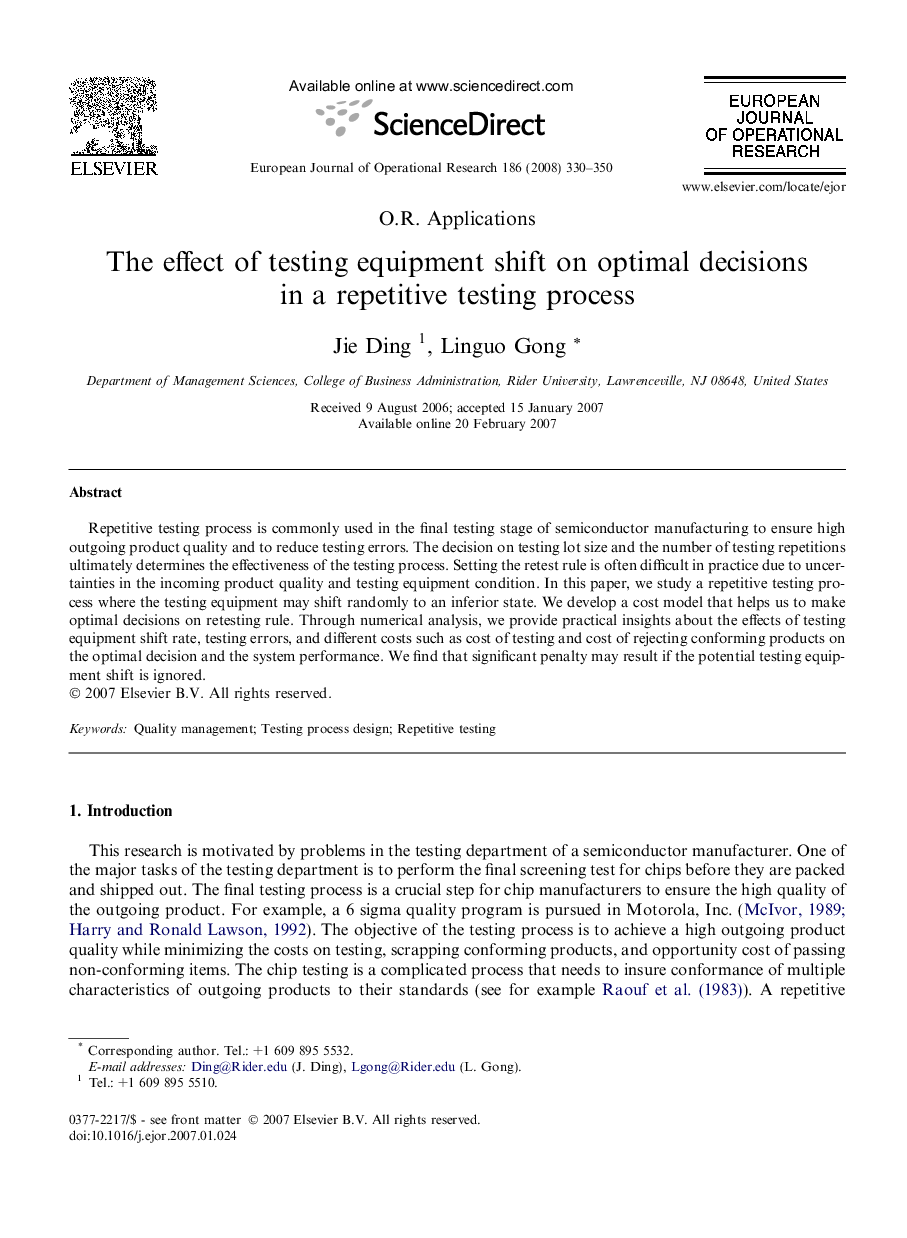| Article ID | Journal | Published Year | Pages | File Type |
|---|---|---|---|---|
| 477734 | European Journal of Operational Research | 2008 | 21 Pages |
Repetitive testing process is commonly used in the final testing stage of semiconductor manufacturing to ensure high outgoing product quality and to reduce testing errors. The decision on testing lot size and the number of testing repetitions ultimately determines the effectiveness of the testing process. Setting the retest rule is often difficult in practice due to uncertainties in the incoming product quality and testing equipment condition. In this paper, we study a repetitive testing process where the testing equipment may shift randomly to an inferior state. We develop a cost model that helps us to make optimal decisions on retesting rule. Through numerical analysis, we provide practical insights about the effects of testing equipment shift rate, testing errors, and different costs such as cost of testing and cost of rejecting conforming products on the optimal decision and the system performance. We find that significant penalty may result if the potential testing equipment shift is ignored.
